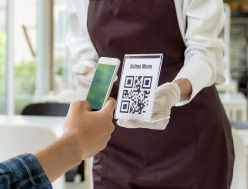QR codes have been around for years, seemingly a marginal tech solution for a problem that didn’t exist. But as with so many things in the world after the appearance of COVID-19, this much-maligned tech solution has been given a purpose as an elegant enabler of touchless commerce. Although much of the initial work on QR code solutions has been done in China (which has seen a 25.86% increase in value from its QR code economy), QR code solutions are quickly being adopted in other places around the world. For example, PayPal introduced QR codes to 28 markets worldwide in May, with transaction fees waived for QR code sales. Moreover, North America is expected to become a leading market for QR code-based transactions in the near future, especially in the retail and transportation sectors.
It is also worth noting the QR code-based solutions are also becoming more popular to manage other pandemic-related issues. This includes the use of QR codes in stores to connect consumers with more information about products as well as peer-to-peer contact tracing to better manage the spread of COVID-19 itself.
 BFC Bulletins Monthly News Digest
BFC Bulletins Monthly News Digest




